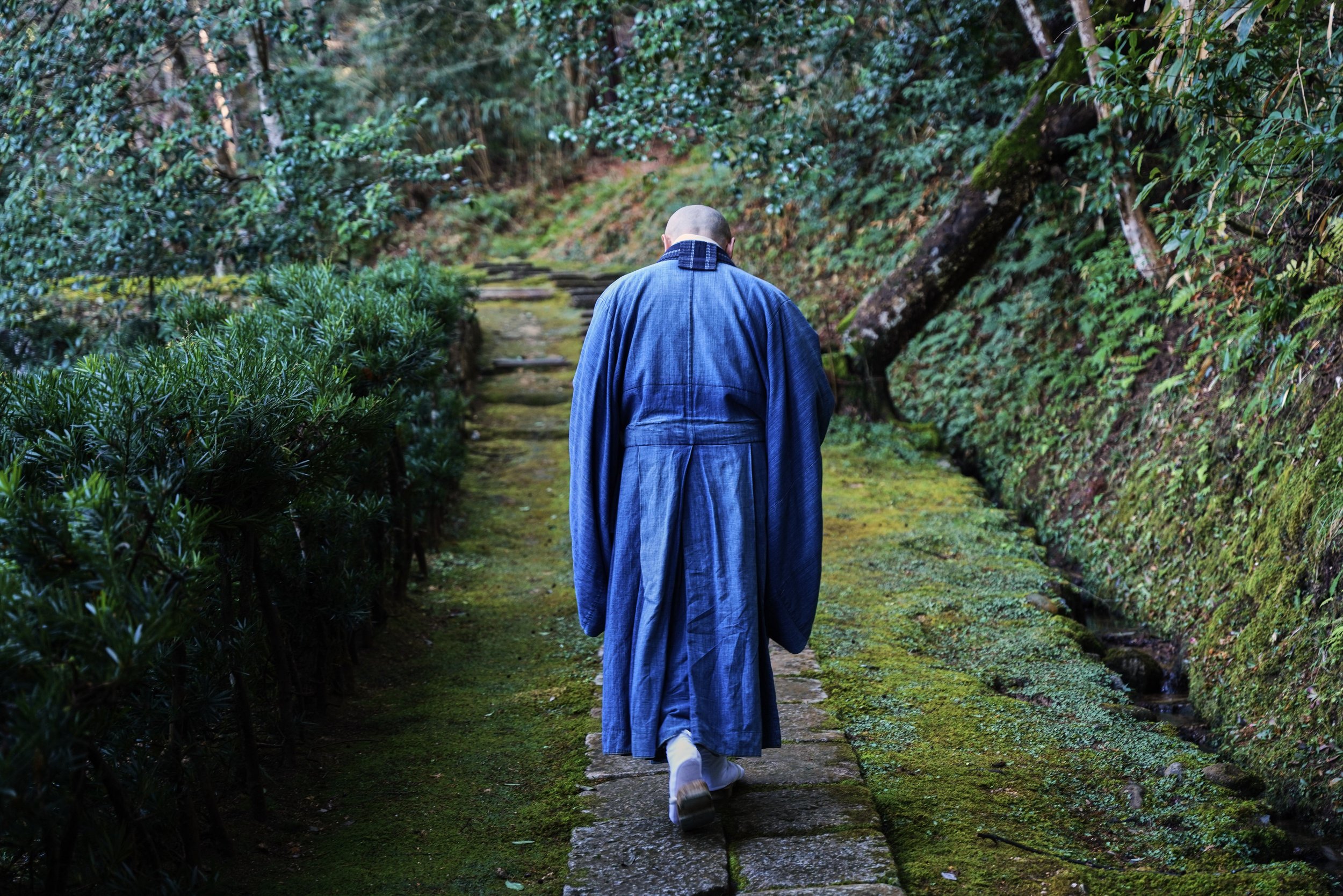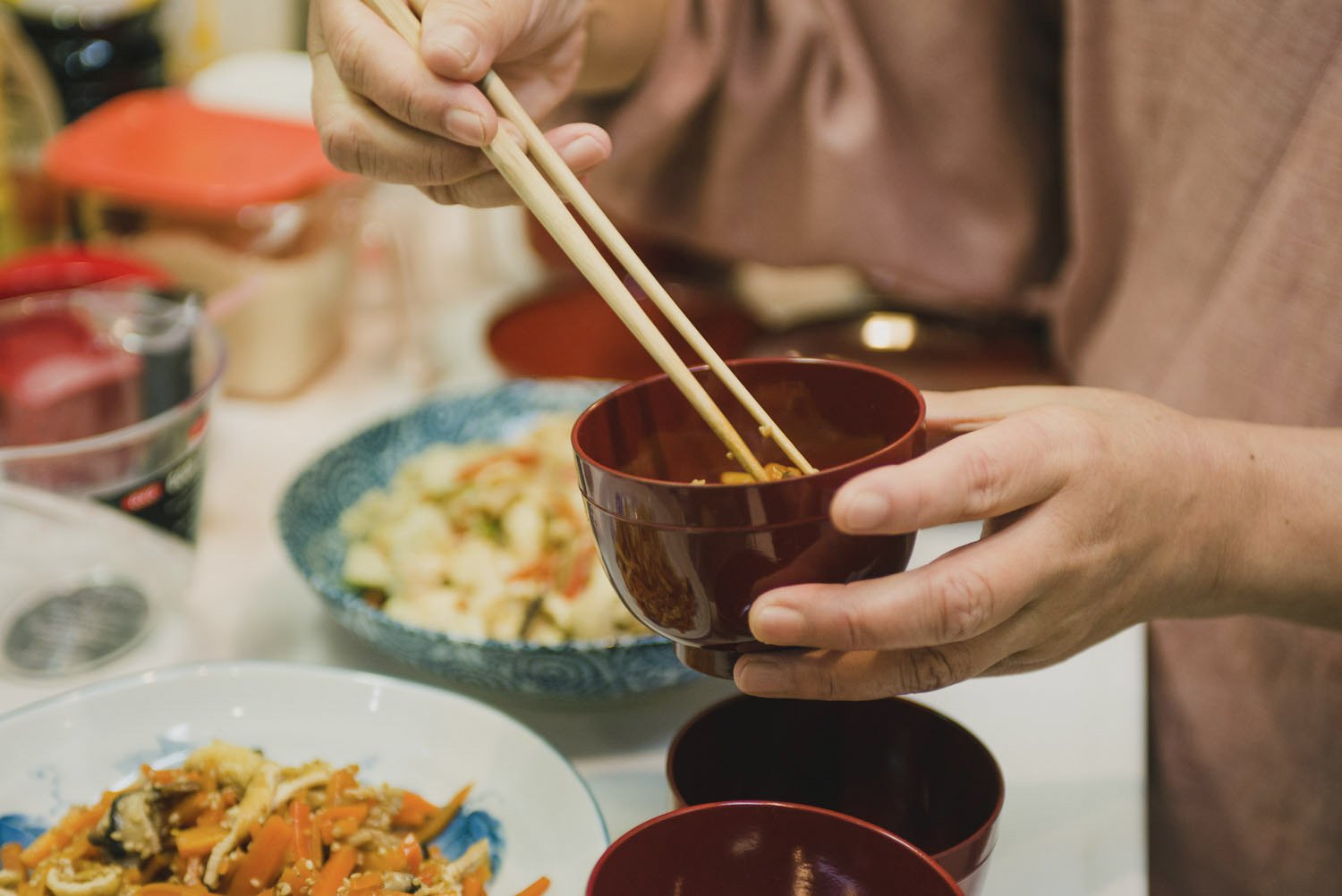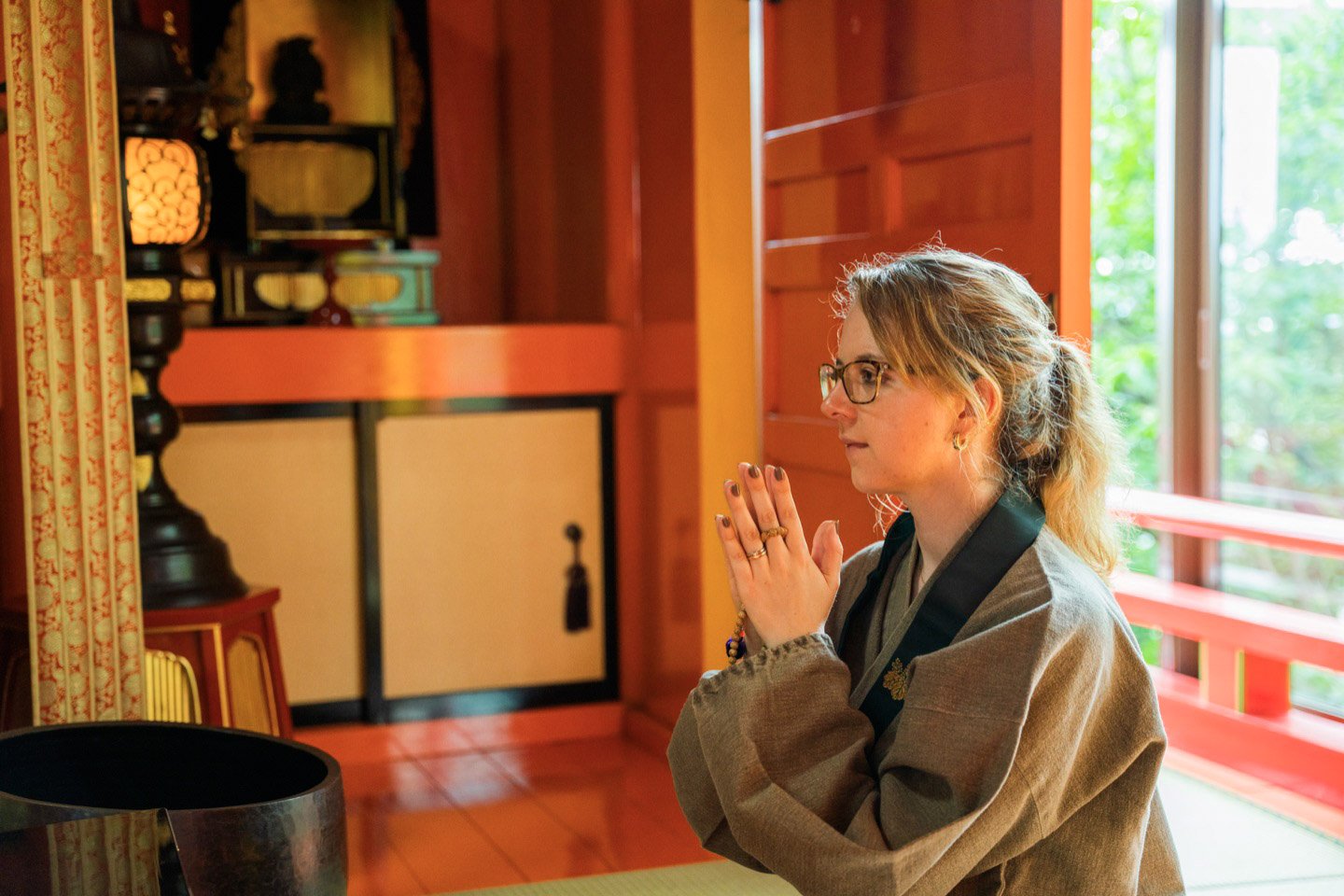Chinese Cuisine, Communal Consumption, and the Buddhist Philosophy of Fucha Ryori
By Nikolas Broy
Only a twenty-minute train ride from Kyoto Station lies Manpuku Monastery 万福寺, a picturesque and time-honored Buddhist temple compound erected in the style of the Chinese Ming Dynasty (1368–1644). Located in Uji, “Japan’s Green Tea Capital,” the monastery functions as the headquarters of the Obaku School 黄檗宗, the last of the country’s Zen Buddhist traditions, established in the seventeenth century by the Chinese émigré monk Yinyuan Longqi 隱元隆琦 (1592–1673, Ingen Ryuki, in Japanese). More than just enjoying the monastery’s magnificent Chinese-style architecture and its distinctive ambiance, temple-goers flock there to relish a freshly brewed cup of sencha and an accompanying course of fucha ryori 普茶料理, the Obaku School’s signature cuisine.
Literally meaning ‘food that is served while drinking tea together,’ fucha ryori is widely acclaimed as a representative Sino-Japanese variant of the Japanese Buddhist cuisine, commonly known as shojin ryori 精進料理. Like shojin ryori, and many other Buddhist foodways in East Asia, fucha ryori is prepared without using meat or animal-based products and can be enjoyed by both vegetarians and vegans alike. Likely originating from the fusion cuisine of seventeenth-century Nagasaki, fucha ryori and its development were strongly impacted by the importation of native Chinese cultural elements, linking Buddhist, Daoist, and Confucian notions and values.
Fucha Ryori’s Influences and Historical Background
During the seventeenth century, in the nascent years of the Tokugawa regime that sought to restrict international trade and travel to curb Western impact on the country, Nagasaki remained one of the few places permitting Chinese traders to settle. Due to the city’s cosmopolitan background as an important trading hub in East Asia, a distinctive fusion cuisine, shippoku 卓袱, emerged. This specific cookery merged Chinese, Dutch, Portuguese, Spanish, and Japanese elements and consisted of dining habits that most Japanese were unfamiliar with at that time. Unlike the default mode of eating that exhibited a strong sense of hierarchy, courtesy, and separation, shippoku embraced the idea of creating an amiable environment by sharing food on large plates or bowls from which all diners—usually four people sitting at one table—ate.
As an effect of the government’s politics of seclusion, most Western foreigners were dispelled from Nagasaki, and only the local Chinese community continued to thrive while establishing some of the city’s best-known Chinese Buddhist temples. During this period, Chinese Buddhist followers began to adapt shippoku-style vegetarian food for religious ceremonies and communal festivals, as it suited their taste better than standard Japanese food, leading to the creation of fucha ryori.
The arrival of Chinese cleric Yinyuan also greatly contributed to the development of fucha ryori. Due to the thriving local Chinese community, Yinyuan was invited to Nagasaki by fellow monks to serve as the abbot of two Buddhist temples. In 1654, the highly respected and widely known cleric arrived with an entourage of disciples and artisans from his home temple Wanfusi 萬福寺, in the southeastern Chinese coastal province of Fujian. Yinyuan remained in Nagasaki for a few years before being persuaded by some Japanese Buddhists and the fourth Shōgun, Tokugawa Ietsuna (1641–1680), to stay in the country and establish a Chinese-style Buddhist enclave in the more centrally located city of Uji.
In Yinyuan’s native province of Fujian, serving small treats and food when drinking tea was a typical leisure activity among educated elites and Buddhist monastics, and was a culinary philosophy that likely influenced shippoku. It is fascinating to note that tea was not merely perceived as a drink but also as part of a cozy gathering that included specific dishes. This is also true for tea-drinking customs in early modern Europe, particularly in Great Britain, where “tea” also denotes a particular meal.
In addition to fucha ryori, Yinyuan is credited with introducing several plants and food products hitherto unknown in Japan, the most intriguing of which was sencha. While at that time, people primarily consumed powdered tea (matcha) whisked with hot water, Yinyuan introduced the state-of-the-art Chinese custom of infusing whole tea leaves with hot water to Japan. The other foodstuffs he introduced became staples in fucha ryori courses, and include ingredients such as watermelon, lotus root, and green beans, which in Japan even carry his name, ingen-mame (インゲンマメ or 隠元豆).
Fucha Ryori and Temple Cuisine
The daily life of the monks at Obaku temples was austere, and their meals consisted of plain rice congee with vegetables to be eaten only at breakfast and noon. Following Buddhist regulations, at least in theory, eating after noon was forbidden. By contrast, fucha ryori was designed as a festive food for attending guests to be served on special ceremonial occasions.
Unlike other East Asian Mahayana Buddhist cuisines that proscribe strong-smelling vegetables, such as garlic, onions, and chives, fucha ryori typically only utilizes a small amount of these ingredients for its ascribed medical values. Cooks seek to preserve the original tastes and consistencies of seasonal ingredients by applying gentle cooking methods previously established in the Japanese Buddhist cuisine shojin ryori. Additionally, each course ideally utilizes six different flavors: sweet, bitter, sour, salty, spicy, and mild, the last of which is a uniquely Zen Buddhist invention. In addition to the Japanese Buddhist impact on fucha ryori, Chinese influence can also be seen, particularly in the rather generous use of oil when preparing deep-fried vegetables, wheat-based dumplings, and small cakes.
A typical fucha ryori course includes two soups, six dishes, rice, fruits, and desserts. The soups, based on a kombu seaweed broth, are typically clear and light, and exhibit a mild taste that is thought to emphasize the natural taste inherent to the ingredients without adding too many spices. Representative dishes include sesame tofu, faux eel (made from tofu), deep-fried dumplings and manju, and stir-fried lotus roots. Some of these, such as sesame tofu, were originally created by Obaku monks and are now popular dishes throughout Japan. Typical ingredients of this dish include a paste made of ground, pan-fried sesame seeds, miso paste, sugar, and light soy sauce.
Chinese Philosophy in Fucha Ryori
Like the monastic food of the other Zen traditions, the composition of a fucha ryori course reflects the belief in the native Chinese cosmological concepts of Yin and Yang and the theory of the five agents (wuxing 五行, goko in Japanese). In Chinese culture, these concepts permeate various aspects of people’s lives and are linked with other phenomena, such as the cardinal directions, seasons, colors, tastes, and humans’ internal organs. Changes, disruptions, and alterations in one of these agents may also affect the others. This is why each course of fucha ryori is supposed to include five ingredients that represent these colors. Ingredients usually utilized include Chinese cabbages (green for wood), carrots (red for fire), fried tofu or bamboo shoots (yellow for earth), Japanese spikenard (white for metal), and kelp (black or blue for water).
The theory of the five agents also impacts other elements of fucha ryori cuisine. A typical course must consider the five tastes and five ways of preparing the ingredients, i.e., raw, boiled, pan-fried, deep-fried, and steamed. Additionally, each course’s ingredients are carefully selected and assembled specifically for their health-sustaining and wholesome benefits. This practice connects to traditional Chinese medicine and food therapy, known in Japan as yakuzen 薬膳. Advocates of this health-minded approach were among Yinyuan’s closest friends at Manpukuji, further showcasing Yinyuan’s undeniable impact on the fucha ryori practices within Japan.
Today, fucha ryori is among the Obaku School’s best-known cultural innovations, attracting visitors to Manpuku Monastery and other affiliated temples. However, fucha ryori is no longer merely a cuisine meant for monks and monastery guests. As early as the nineteenth century, the cuisine was adopted and popularized by secular restaurants throughout the country. Now, modern gourmands can enjoy fucha ryori in a variety of different places and savor the pairing of tea and delicacies. By gathering together around this exemplary cuisine, they can experience the taste of Chinese philosophy and Buddhist influence for themselves.
About the Author: Trained in Religious Studies and Chinese Studies, Nikolas Broy’s work engages with religion in East Asia, especially Buddhism, non-official religious groups and “sects,” religion and food, material aspects of religion, and globalization. During his research in Japan, he explored various aspects of Japanese religious culture, including “martial monks” in medieval Japan to contemporary Sino-Japanese new religious movements.







